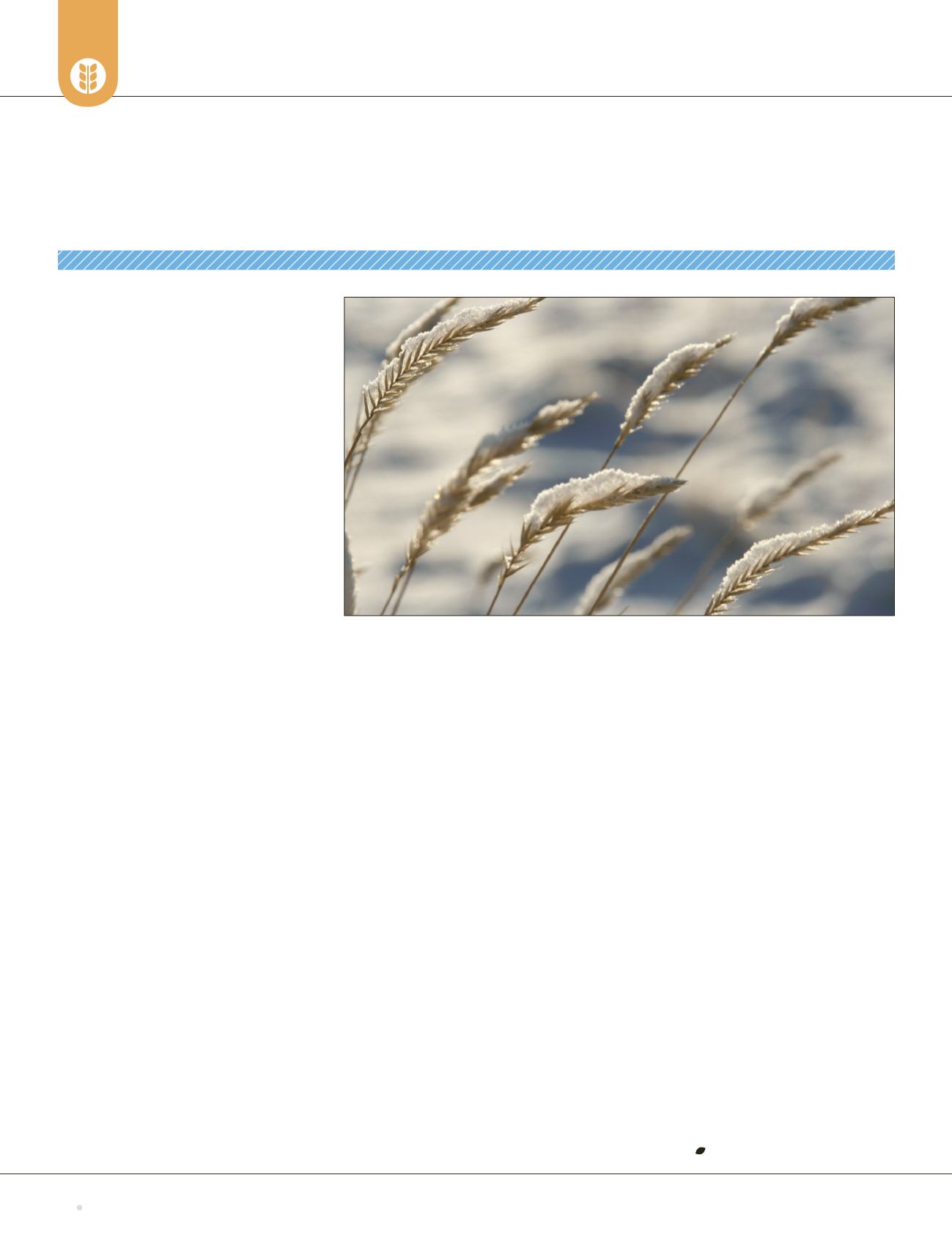

Spring
2017
Grains
West
16
THE
FARMGATE
BY LEE HART
Photo: iStockPhoto
SNOWEDUNDER
UNHARVESTEDCROP ISAMESSONMANY LEVELS
JODY KLASSEN IS ONE OF MANY
farmers across central and northern Al-
berta who really don’t see a happy ending
for the story that played out late in 2016,
leaving more than one million acres of
grain and oilseed crops left unharvested
under snow. All he can do is make the
best of a bad situation.
Klassen, who farms at Mayerthorpe,
northwest of Edmonton, has about 12 per
cent of his crop still out in the field. He
knows many farmers are in a worse posi-
tion than him, with 30, 40 or even 70 per
cent of their crop still out in the field after
being caught by an early-October snow-
fall. Damage figures are still being tallied,
but province-wide losses are expected to
be in the tens of millions of dollars.
After the snow fell and the weather
improved, Klassen did manage to harvest
another 2,000 acres in November, but his
e orts were eventually shut down again
by more winter weather, leaving about
500 acres of canola and 140 acres of wheat
unharvested for the rest of the winter.
“I really don’t know what to expect when
we are able to get out there and get this o
in the spring,” Klassen said. “I’ve farmed
most of my life and we’ve always finished
harvest in fall, for more than 40 years.”
Everything unharvested on the Klassen
farm is under snow. He was planning to
straight-cut the remaining crop, but as of
late January it “was neither standing nor
swathed—it was just flat.”
Klassen is hoping he can recoup about
80 per cent of the crop value that’s still
out there, but only time will tell whether
that will actually be possible. “For those
farmers a ected, we really need the grain
companies to work with us on this,” he
said. “We need to recover whatever value
we can.”
According to Harry Brook, a longtime
crop specialist with Alberta Agriculture
and Forestry, any standing crop that’s
gone down will be extremely di cult to
pick up, and any swathed crops won’t be
much better. Freeze-and-thaw cycles over
the course of the winter could cause grain
kernels to sprout, and mice and voles un-
der the snow will be eating and defecating
on crop. There could also be losses from
larger wildlife foraging on grain.
“Some of our specialists here estimate
canola left out over winter could lose 50 per
cent of its yield and 50 per cent of its qual-
ity,” Brook said. “In some areas through
central and northern Alberta, right up into
the Peace River region, there is 30 to 40 per
cent and perhaps more of the crop still out,
so this is a devastating situation.”
Zsuzsanna Sangster, an insurance
solutions specialist with Agriculture
Financial Services Corporation (AFSC),
said her company has been doing all it can
to process more than 2,000 unharvested
crop insurance claims a ecting more than
one million acres.
The company’s team of on-farm in-
spectors was strengthened in December
to begin the damage assessment process.
As of Feb. 1, 2017, AFSC had paid out
benefits on about 45 per cent of the un-
harvested claims.
“We’re still in the process, but so far
losses are totalling about $17.5 million,”
Sangster said. “This is not a common sit-
uation. The last time we had crop losses
of this scale was in 2004.”
Once AFSC inspectors have made their
on-farm assessments, claimants may be el-
igible for interim or partial crop loss insur-
ance payments. Once the unharvested crop
is harvested, the rest of the payment will be
made based on final yield and quality.
“If there are any producers who don’t
plan to actually harvest crop that’s still
out there—say, if they plan to bale wheat
and use it for feed or straw, for exam-
ple—we need to know that too,” Sangster
said. “If they decide to do something
else with the crop other than harvest,
then we can determine a final insurance
amount.”
The 2016 harvest still weighs heavily on many Alberta farmers who were unable to get their entire crop off before
the winter.









